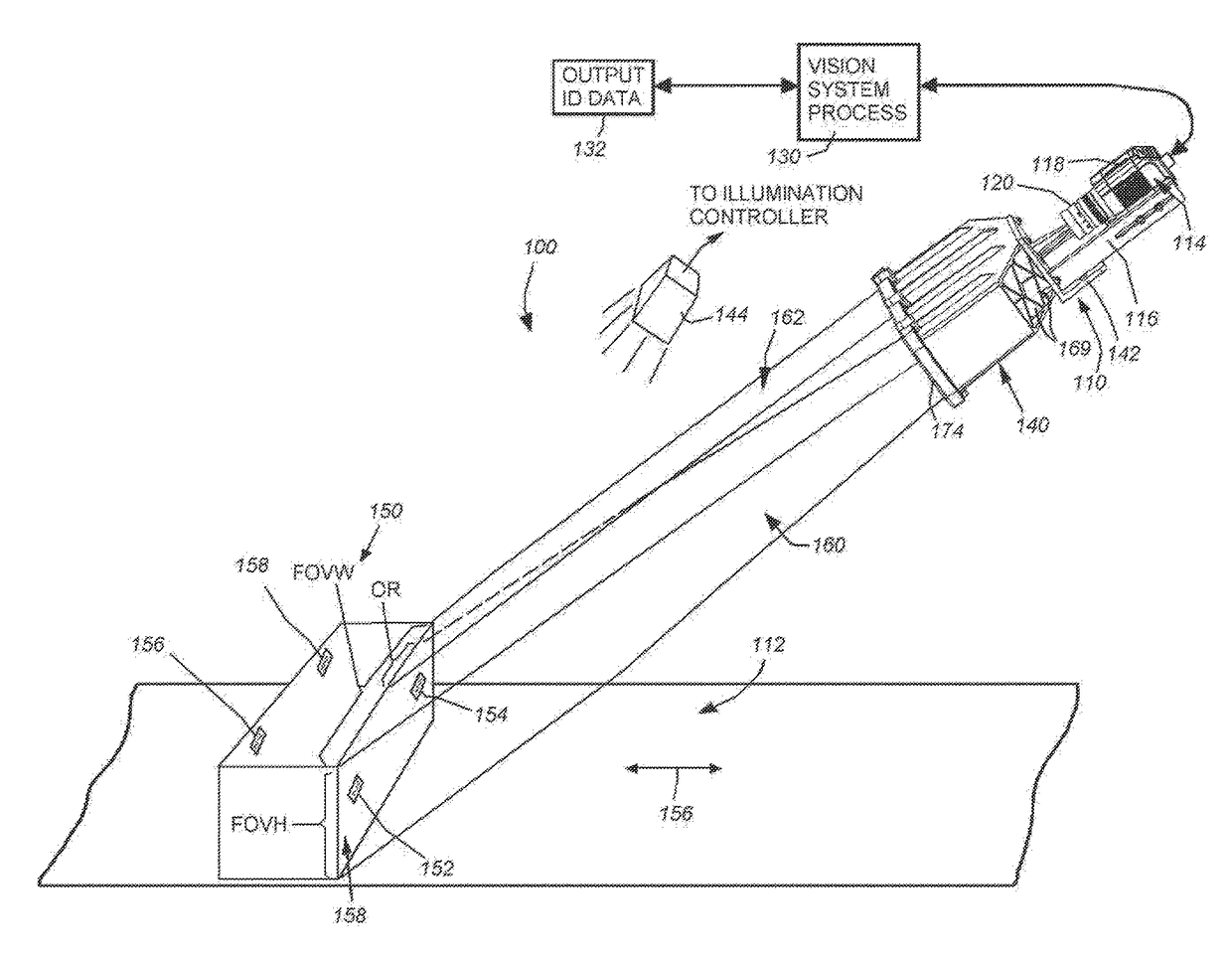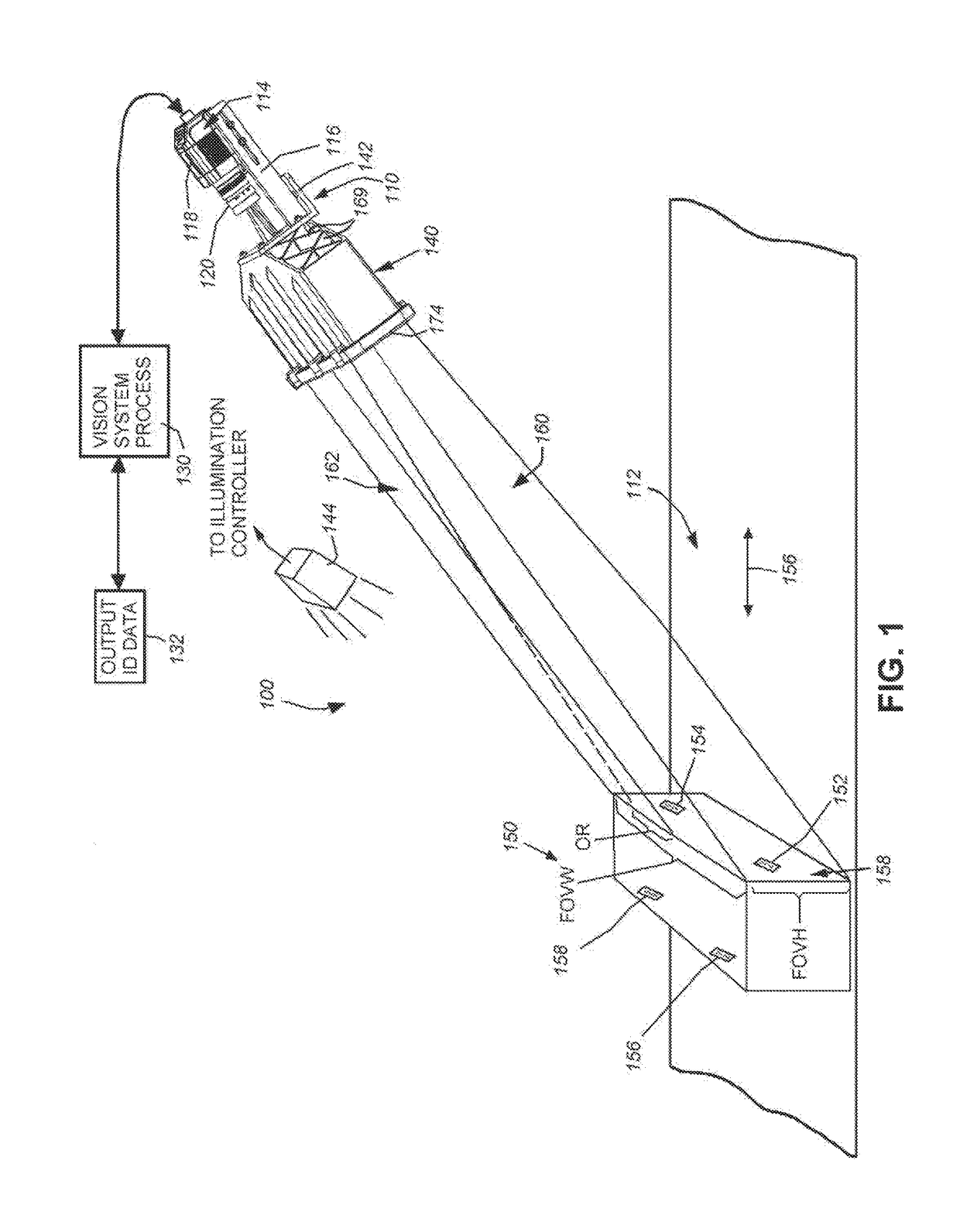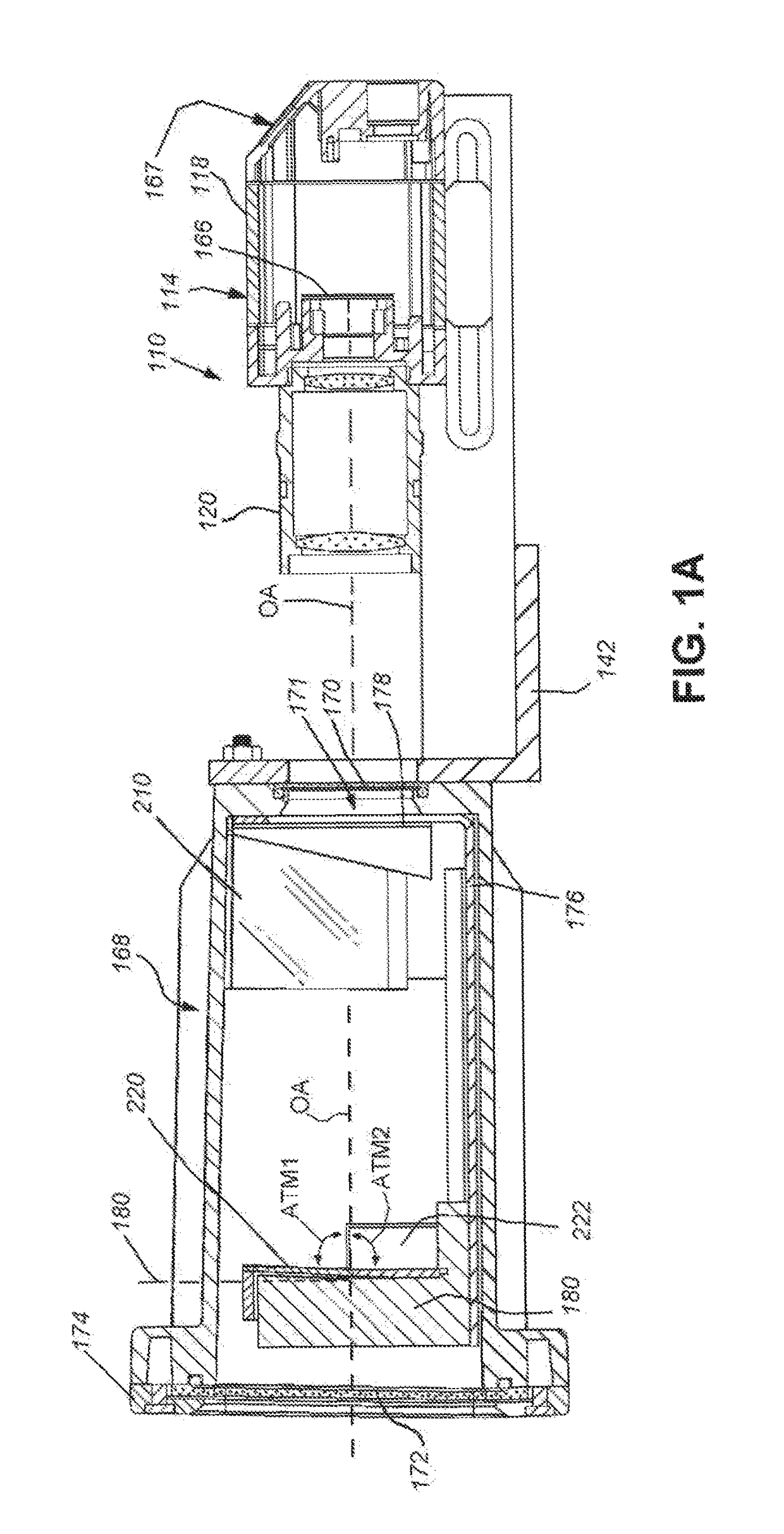System and method for expansion of field of view in a vision system
a vision system and camera lens technology, applied in the field of vision systems, can solve the problems of reducing affecting the field of view of a single reader, and affecting the accuracy of the image, so as to reduce the need for resolution, increase the resolution, and be convenient to install and use.
- Summary
- Abstract
- Description
- Claims
- Application Information
AI Technical Summary
Benefits of technology
Problems solved by technology
Method used
Image
Examples
Embodiment Construction
I. FOVE General Overview and Operation
[0048]FIG. 1 shows a vision system arrangement 100 in which a vision system or ID reader assembly 110 oriented at an acute angle with respect to a moving line represented by a conveyor 112. The vision system 110 includes a camera assembly 114 adjustably mounted in a frame 116. The camera assembly includes the camera base 118 and a lens 120. A variety of camera implementations can be employed in alternate embodiments. In an embodiment, the base 118 includes an internal sensor (described below), having a pixel array for acquiring grayscale of color image data. The size of the array is highly variable. For example, the array can be a conventional rectangular (roughly square) array having a size of 1024×768 pixels. In alternate embodiments, other array sizes, including, but not limited to, 2048×384 or 2048×768 pixels can be employed. The camera base 118 can include an internal vision processor and ID (barcode) decoding circuit. Alternatively, the ca...
PUM
 Login to View More
Login to View More Abstract
Description
Claims
Application Information
 Login to View More
Login to View More - R&D
- Intellectual Property
- Life Sciences
- Materials
- Tech Scout
- Unparalleled Data Quality
- Higher Quality Content
- 60% Fewer Hallucinations
Browse by: Latest US Patents, China's latest patents, Technical Efficacy Thesaurus, Application Domain, Technology Topic, Popular Technical Reports.
© 2025 PatSnap. All rights reserved.Legal|Privacy policy|Modern Slavery Act Transparency Statement|Sitemap|About US| Contact US: help@patsnap.com



